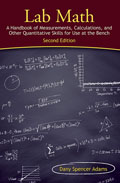Kids remote learning? Fear not the math!
Terrified of teaching math, or even helping your kids with their math homework? This is a nice article from Tiffanie Wen: https://www.bbc.com/worklife/article/20200506-how-to-tackle-your-anxiety-about-maths The BBC is also providing some teaching help for lockdown learning, including primary math https://www.bbc.co.uk/bitesize/articles/zvryp4j
Featured Posts
Terrified of teaching math, or even helping your kids with their math homework? This is a nice article from Tiffanie Wen: https://www.bbc.com/worklife/article/20200506-how-to-tackle-your-anxiety-about-maths The BBC is also providing some teaching help for lockdown learning, including primary math https://www.bbc.co.uk/bitesize/articles/zvryp4j
Left: Cartoon by Elkanah Tisdale from the March 26, 1812 edition of the Federalist-leaning paper The Boston Gazette showing the Massachusetts district newly created to favor the Jeffersonian Republicans in upcoming elections. Right: the wing and clawless version of the map. Thinking the actual district looked like a salamander, an editor at the paper declared […]
It bugs me no end when I hear “the model shows…” In science evidence is the only thing that “shows” anything. The only thing worse is “the model proves…” That’s like asking for directions then turning to your passenger and saying “that proves it: the only way to get from here to there is that […]
Measurement appreciation day In the 2 July 2017 issue of Nature, there is an article in the Comment section about the science of measuring: http://www.nature.com/news/metrology-is-key-to-reproducing-results-1.22348 The moral of the article is that if we all actually measured properly it would go a long way towards fixing our reproducibility problem. Good point, that unfortunately has to […]
A short, easy to read essay by Helena Jambor* on The Node, gives some good tips for adding scale bars to images. She also gives a little history: interestingly, putting scale bars on images is not an age-old practice. Apparently, there was a time when scientists (and many non-scientists) were assumed to know how big things were. But that […]
http://flowingdata.com/famous-movie-quotes-as-charts/
I am aware that there are entire fields as well as high impact journals that overlook this mistake, but I want to bring up, (yes, again), why you should always use the standard deviation when drawing error bars or reporting the uncertainty about the data you actually collected; that is, why you should not report […]
I am on a mission to spread the news of this transformational (yes!) exercise for all teachers of all subjects, but especially scientists. It is called the Wason* 2-4-6 Task, (I’ve seen it referred to as the 2-4-8 test). It is the best exercise I’ve ever seen for demonstrating the perils of confirmation bias. It […]
Hi Dany Spencer Adams, I think there might be an error in the equation for converting RCF to rpm on page 140 of the second edition, hardcover. Should the equation be: rpm= (RCF / (r x 1.118 x 10^-6))^1/2 instead of 10^-5? because the radius is measured in mm? … E. D. Dear E. D. […]
How to Make Truly Terrible Tables: A Tutorial by David Streiner Part I: Be Too Accurate No, your eyes are not deceiving you; the title of the blog has changed slightly, from “How to Make Truly Terrible Graphs” to “How to Make Truly Terrible Tables.” This reflects the fact that it is possible to […]
Welcome to Lab Math
Test this

Recent Comments